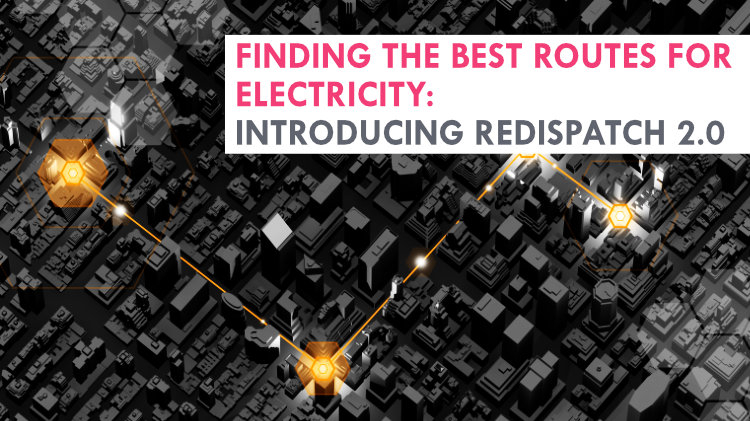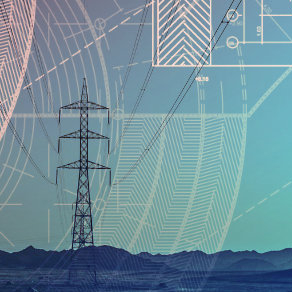
In the US, you dial 911 when there is an emergency. A dispatcher - or “operator” in everyday English - will take your call and, while making sure you keep calm and provide all the information they need, send fire, police, or ambulance services as required. Logistics firms also employ dispatchers whose job is similar: to schedule and organize delivery. Ditto for taxi dispatchers.
In the context of the energy industry, dispatching is the process that ensures that electricity - just like a fire truck or an ambulance - is available wherever and whenever it is needed. Often, it also has to be redispatched. What all of this means and how the energy sector in Germany adjusted its regulatory framework last year are the focus of the first of our three-part series about Redispatch 2.0.
Sending energy on its way
Any industrial facility must be run as efficiently as possible. For a power plant, this means matching power generation and load demand as closely as possible. In order to achieve this, power plant operators use a capacity allocation schedule that they have to report to their transmission system operators (TSO). Essentially, it’s resource planning: these schedules help TSOs determine how much of the available capacity they should dispatch at which location(s), when and for how long. This applies to both conventional and renewable energy. The latter, however, presents a challenge when it comes to securing the balance between supply and demand. In Germany, for example, the wind turbines up north produce a lot of energy during the cold, windy months of the year, while the industrial powerhouses in the south - notably in Bavaria and Baden-Württemberg - require more energy in the same period. However, an increased amount of power heading toward the southern region may cause grid bottlenecks. Conversely, not having enough energy anywhere in the grid is just as problematic: stability must be secured at all times. Shifting electricity in order to guarantee that stability is called redispatching.
While analyzing the load calculations recorded in a power plant operator’s schedule, TSOs may find that there is a risk of overload. To avoid putting any strain on the network, they instruct the power plant operator to change the schedule, i.e. to reduce the output. In practice, redispatching means that power plant A is activated or instructed to increase its feed-in when consumption is higher in a particular region, while power plant B has to decrease the amount of power it was originally planning to deploy. In this way, a load flow is created that offsets the bottleneck. The graph below shows an example.

As nuclear energy is gradually phased out - Germany will have stopped using it by the end of 2022 - and reliance on electricity from renewable energies continues to grow, grid operators have to take redispatch measures increasingly frequently. According to a study published by BDEW (Federal Association of the Energy and Water Industry) in November 2020, the volume of energy redispatched in Germany in 2010 was 306 GWh, but the following years saw a steady growth and, by its peak in 2017, that amount had reached 20,439 GWh - an increase by a factor of almost 70. Redispatching used to be carried out by traditional large-scale power plants of 10 MW or more and only in the transmission grid, but that changed as of October 1, 2021. And many other countries planning to eliminate coal or nuclear energy are looking to Germany as an example, learning from its successes and mistakes.
Redispatch 2.0 - rewriting the rules
In May 2019, NABEG (Grid Expansion Acceleration Act) came into force. It contained new requirements for the management of grid congestion that would have to be implemented by October 2021. BDEW then launched the project “Redispatch 2.0” the following month with the aim to develop a concept of how these requirements could be met.
The most significant change the new legislation brought about is that redispatching became extended to both conventional and renewable plants from 100 kW as well as all plants controlled by the grid operator. In addition, it is now also used in the distribution grid. On the whole, the act regulates the implementation, balancing and billing of network congestion measures. The list of some of the requirements below gives you an idea of how complex an endeavor it was for all participants.
- redispatch must be carried out at the lowest possible total costs across all network levels and in compliance with network and supply security;
- the data necessary for redispatch - about downtimes and start-up ramps, for instance - must be collected and imported into existing systems;
- billing and balancing processes must be upgraded and handled by the network operator;
- tools required for feed-in forecasts, grid condition assessment and the determination of redispatch measures must be specified and purchased;
- uniform, standardized and largely automated market processes must be developed.
As for the schedule, the project had to be implemented linearly, in four phases: technical design, market processes design, data formats design and the implementation within the companies. While Redispatch 2.0 is obligatory, companies that activate it will be reimbursed for any expenses incurred.
The new regulations took effect on October 1, 2021, and we are starting to see how they translate into greater efficiency and improved services in Germany’s energy industry. We’ll be back soon with the second part of our series in which we will discuss how Redispatch 2.0 might impact markets outside Germany.




